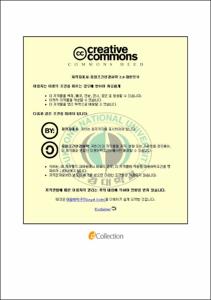흙-시멘트 혼합토의 강도특성에 관한 연구
- Alternative Title
- Strength Characteristics of Clay-Cement Mixtures
- Abstract
- 원지반 점토와 안정처리제의 심층혼합에 의한 연약지반 개량공법인 DCM 공법이 1990년대에 국내에 도입된 이후 시공실적은 증가하고 있으나 배합설계에 대한 연구가 미흡하여 연약점토의 특성을 반영하지 못하여 국내 DCM 공법의 신뢰성과 경제성에 대한 의문이 대두되고 있는 실정이다. 점토-시멘트 혼합토의 공학적 성질(특히 강도)은 재료, 배합비, 원지반 흙의 특성, 혼합방법, 양생환경, 시험방법 등에 의하여 영향을 받는 것으로 알려지고 있다. 따라서 본 연구에서는 실내시험을 통하여 개량토의 강도에 영향을 미치는 주요 인자(혼합방식, 원지반 함수비, 시멘트 첨가량, 교반속도)에 대한 평가를 실시하여 점토의 특성과 배합설계법의 토대를 제시하고자 한다.
본 연구에 사용된 시료는 4개 지역의 연약점토로 부산신항, 낙동강 염막지구, 김해 장유지구, 김해 화목지구에서 채취한 교란시료를 사용하였다.
점토-시멘트 혼합토는 시멘트 슬러리를 안정재로 사용한 습윤혼합방식, 시멘트 분말을 안정재로 사용한 건조혼합방식, 습윤혼합방식에서 물-시멘트비, (원지반 점토+물)-시멘트비(wc/c), 교반기 회전속도를 다양화하는 등 여러 가지 시험법으로 성형한 시료를 양생한 후 일축압축강도시험을 실시하였다.
본 연구 지역의 원지반 점토시료에 대해 습윤 및 건조혼합방식으로 시료를 제작한 결과 건조혼합방식으로 제작한 시료의 일축압축강도와 변형계수가 더 크게 나타났다. 또한 개량토는 시멘트 함량이 높고 양생기간이 길수록 일축압축강도와 변형계수가 크게 나타났다. 원지반 점토시료와 시멘트 혼합시 교반기 회전속도가 빠를수록 일축압축강도와 변형계수가 증가하는 것으로 나타났다. 원지반 점토의 모래함량이 높고 함수비가 낮을수록 개량토의 일축압축강도와 변형계수가 크게 나타났다.
Deep cement mixing method (DCM) has been frequently employed to increase a bearing capacity and to reduce a settlement of soft foundation soils. The magnitude of strength increase of soil stabilized with the deep cement mixing method is influenced by several factors because the basic mechanism of strength increase is closely related to the chemical reaction between soil and cement. The factors can be divided into four categories such as characteristics of binder, soil conditions, mixing conditions, and curing conditions. The objective of this study is to investigate the effect of various factors on the strength characteristics of soil-cement specimens fabricated in the laboratory. Factors evaluated in the study include sand and water content in the base clay, quantity of cement, mixing method, degree of mixing, and curing time. The amount of sand and the water content in the base clay has significantly affected the unconfined compressive strength of soil-cement specimens. In addition, the rotation speed of mixing blades has also a considerable effect on the strength of soil-cement specimens. The water-clay to cement ratio showed a better correlation with a unconfined compressive strength of soil-cement specimens compared to the water-cement ratio used in concrete industry.
- Issued Date
- 2007
- Awarded Date
- 2007. 8
- Type
- Dissertation
- Keyword
- Deep cement mixing method Factors Clay-water-cement ratio Unconfined compressive strength Stress-strain Elastic modulus Failure strain Water-cement ratio
- Publisher
- 부경대학교 산업대학원
- Alternative Author(s)
- Park, Jae-Dam
- Affiliation
- 부경대학교 산업대학원
- Department
- 산업대학원 토목공학과
- Advisor
- 정두회
- Table Of Contents
- 제1장 서론 = 1
1.1 연구의 배경 = 1
1.2 연구의 동향 = 2
1.3 연구의 목적 = 2
제2장 이론적 고찰 = 4
2.1 DCM 공법의 고화원리 = 4
2.2 DCM 개량 지반의 공학적 성질 = 4
제3장 시험조건 및 방법 = 19
3.1 시험조건 = 19
3.2 시험방법 = 21
제4장 시험결과의 고찰 = 26
4.1 재령과 혼합방식에 의한 영향 = 26
4.2 일축압축강도와 변형계수의 관계 = 31
4.3 파괴변형율과 일축압축강도의 관계 = 33
4.4 점토-시멘트 건조중량비에 의한 영향 = 34
4.5 물-시멘트비(w/c)에 대한 영향 = 43
4.6 (원지반 점토+물)-시멘트비(wc/c)에 의한 영향 = 47
4.7 교반회전속도에 의한 영향 = 52
4.8 교반 시간에 의한 영향 = 56
제5장 결론 = 59
참고문헌 = 60
감사의 글 = 66
- Degree
- Master
- Files in This Item:
-
-
Download
 흙-시멘트 혼합토의 강도특성에 관한 연구.pdf
기타 데이터 / 1.98 MB / Adobe PDF
흙-시멘트 혼합토의 강도특성에 관한 연구.pdf
기타 데이터 / 1.98 MB / Adobe PDF
-
Items in Repository are protected by copyright, with all rights reserved, unless otherwise indicated.